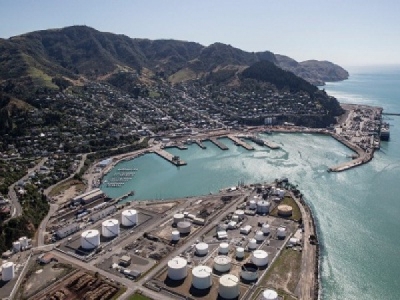
Posted on February 16, 2017
By Charlie Mitchell, stuff
Two of the South Island’s largest organisations are at odds over a planned dredging operation in Lyttelton Harbour.
Lyttelton Port of Christchurch (LPC) has applied to expand its shipping channel, allowing larger ships to enter the port.
The channel expansion would cost up to $120 million and was part of the port’s $1 billion redevelopment.
Ships were becoming larger and the port needed to accommodate them to stay competitive, LPC said in its resource consent applications to Environment Canterbury.
Its proposal involved lengthening the channel by 6.5 kilometres, doubling its current length. It would also deepen and widen the channel.
Aspects of the plan have drawn major opposition, led by Ngai Tahu, which has kaitiaki (guardianship) of the harbour.
Its concern is the dumping of sediment sucked-up from the seabed and the impact it could have on the harbour’s marine life.
Over about two years, 18 million cubic metres of sediment would be dredged and dumped out to sea, mostly at a disposal site about 6km from Godley Head.
It has a back-up disposal site closer to shore, about 2.25km from Godley Head. It already dumps about 400,000 cubic metres of sediment at that site each year as part of its channel maintenance.
Both dumping sites are within the Banks Peninsula Marine Mammal sanctuary and near the peninsula’s fisheries, where paua, crayfish, mussels, and flatfish are harvested.
The fisheries, including several marine farms, are used for mahinga kai (food gathering) by Ngai Tahu Seafood and Port Levy-based Te Rununga o Koukourarata.
The iwi had invested heavily in aquaculture on Banks Peninsula and believed the port’s plans could degrade the harbour and impact mahinga kai.
Ngai Tahu said the port’s application was “fundamentally flawed,” and experts it commissioned found “several deficiencies” which meant it could not support the application as it stood.
It said the port had downplayed the impact the sediment would have on marine life and failed to rule out the possibility that sediment could wash up on shore.
It supported LPC’s need to accommodate larger ships but it could not be at the cost of mahinga kai, it said.
The Koukourarata rununga had spent $1 million on aquaculture, which provided education and employment to locals, and had bought the former Le Bons Bay School for an aquaculture research centre.
Ngai Tahu Seafood had several marine farms on Banks Peninsula, which it expected to be in high demand after the closure of the Kaikoura fishery after last year’s earthquakes.
“In the event that commercial fisheries are lost or disturbed by the proposals, there may be a monetary value lost to Ngai Tahu Seafood, and in turn, the economic well-being of the tribe,” the submission said.
“It is [also] likely that there will be effects on Ngai Tahu values that possibly cannot be given a monetary value.”
Many public submissions echoed Ngai Tahu’s concerns about the impact on the harbour’s water quality and how it would affect fisheries.
There were also concerns about the impact on Hector’s dolphins, which were often spotted in the marine sanctuary.
Dolphin conservation consultant Gemma McGrath said the dredging would add more pressure on the endangered species.
“It should be unacceptable to dump huge amounts of mud and sand in a Marine Mammal Sanctuary,” she wrote.
LPC chief executive Peter Davie said the port’s environmental monitoring plan would be the largest of any dredge project in New Zealand, and would allow the public to see real time data.
“We have spent more than $3 million to engage a range of expert scientists to investigate any adverse effects the proposed dredging and ongoing maintenance could have.”
Expanding the channel would ensure the port would remain the South Island’s major international trade gateway, he said.
Source: stuff





